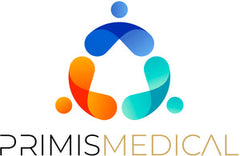Digital specimen radiography systems have been used for many years and have proven to be invaluable tools for research, analysis, and archiving of specimens. With the continued advances in digital imaging technology, these systems are becoming more accurate and efficient, allowing for improved imaging and analysis of specimens. A variety of digital specimen radiography systems are available, including the Faxitron Bioptics PathVision.
A Brief History
Digital specimen radiography systems date back to the early 1990s. At this time, X-ray technology was used to create images of specimens, primarily for medical purposes.
In the mid-1990s, advances in digital imaging technology allowed for improved resolution and image quality. This allowed for more detailed images to be captured and more accurate information to be gathered from images.
In recent years, there have been many advances in the technology used in digital specimen radiography systems. These advances have allowed for improved imaging and analysis of specimens. Additionally, safety features have been added to the systems to ensure that radiation safety standards are met.
What is a digital specimen radiography system (DSRS)?
A digital specimen radiography system is an imaging system used to take pictures of specimens, such as rocks, minerals, fossils, and bones. The images are usually captured on a digital radiography plate and can be used for research, analysis, and archiving. The system typically uses X-ray radiation to create the images and can be used to capture detail and texture of specimens that would otherwise be difficult to view.
What is the importance of a digital specimen radiography system?
The use of digital specimen radiography systems has become increasingly important in the field of medicine. The systems can be used for medical imaging, such as for orthopedic imaging, dental imaging, and radiography of skeletal specimens. The systems are also used in research, as they can be used to capture images of soft tissue samples for biopsies or images of organs, bones, and other anatomical structures. Additionally, the systems can be used to capture images of pathological specimens, such as tumors, and can be used to monitor the progress of treatment.
The use of digital specimen radiography systems has also become increasingly important in the field of geology. The systems can be used to capture images of rocks and minerals, enabling researchers to study the composition and structure of specimens. The systems can also be used to capture images of fossils, allowing researchers to study the anatomy and evolution of ancient organisms.
How do digital specimen radiography system work?
Digital specimen radiography systems work by using X-ray radiation to create images of specimens. The X-ray radiation is focused on the specimen and the radiation that is not absorbed is then captured by a digital radiography plate. The plate then converts the radiation into an image that can be viewed on a monitor or printed out. The system can also be used to capture textures and details in the specimen that would otherwise be difficult to view.
How do you use a digital specimen radiography system?
Using a digital specimen radiography system is relatively simple. First, the specimen is placed on the system’s platform. Then, the system is programmed and adjusted according to the type of imaging being done. X-ray radiation is then used to capture the images, which can then be reviewed and analyzed on the system’s monitor.
What items can be placed in digital specimen radiography system?
Digital specimen radiography systems can be used to capture images of a variety of different items, such as rocks, minerals, fossils, bones, tissue samples, organs, and other anatomical structures. Additionally, the systems can be used to capture images of pathological specimens, such as tumors, and can be used to monitor the progress of treatment.
How would a digital specimen radiography system benefit medical facilities and hospitals?
A digital specimen radiography system would benefit medical facilities and hospitals by providing detailed imaging of specimens. The system would be able to capture images quickly and accurately, enabling medical professionals to obtain the information they need quickly. Additionally, the system would be able to store images for long-term use, making it invaluable for research and archiving. The system would also be able to capture images of pathological specimens, such as tumors, and can be used to monitor the progress of treatment.
What digital specimen radiography system should you consider?
The Faxitron Bioptics PathVision Digital Specimen Radiography System is a high-performance imaging system designed for medical applications. It is capable of capturing high-resolution images and has a wide range of features, including image analysis software, object recognition, and automated image archiving. The system is designed to be easy to use and can be configured to meet the specific needs of the user. Additionally, the Faxitron PathVision system is designed with safety in mind and is compliant with radiation safety standards.






